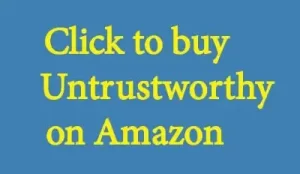Consider Shannon Duffy, One of My Original Characters
Who is Shannon Duffy?
The better question is: who are Shannon Duffy? Because this character isn’t human at all. They aren’t even one entity.
Er, what? The idea behind Shannon is a totally wacky one, I admit. It comes from a thought experiment.
What if your individual cells were sapient?
If they ever could be, then they would presumably congregate into a kind of colony. In this way, they would behave a lot like algae, although algae of course aren’t sapient, no matter how many of them you put together.
Where Did Shannon Duffy AKA Levi Fremder Come From?
Fan fiction, actually! I originally made a similar character (although with a different name) a part of a very futuristic time travel organization. But in that series of stories, they are almost a curiosity. Other characters (human and otherwise) interact with them, but their characteristics don’t come into play too often.
In general, they are just a kind of addled character. But that’s fan fiction. The use of a very similar character in The Real Hub of the Universe was for several purposes, not just as some oddity.
Note: the fan fiction creation was 100% my own and thoroughly original.
The Past is Prologue — Backstory for Shannon Duffy
Shannon themselves say it best.
“…You said you’d been here maybe ten thousand years, right?” The colony nodded. “Boston hasn’t existed that long. So where did you alight?”
“It was on the shores of what is now called Lake Victoria. It is a large lake in the center of the African continent.”
“Oh, my.”
“There were dense forests and many animals and of course there was water, and so we stayed, because it was a good place. Humans came and went and finally began to settle about eight thousand years later.”
“So, you were there for that long?”
“Yes. We observed humans for a while, and then decided they might be of interest to study, and so the concept of a subject was birthed.”
“And so, you just picked someone in Africa?”
“Yes. Her name was Kamali. It means ‘protector’. Kamali taught us how to interact with humans. We had been observing for a long time, but Kamali made it make more sense to us. She died young. It was while she was giving birth to her second son.”
“Oh, and what happened next?”
“We went north. We would meet subjects and it would only sometimes work out. We came to what you now call the Holy Land. We lived there a while, and moved onto Athens, and then to Alexandria, and later to Rome. We fell in with the Jewish people for several of your generations and we lived in various walled ghettos. We moved with our subjects, who were often persecuted. Before we came to the United States, we were living in an area called Friedberg. The people around us spoke German, but the people inside spoke Yiddish, mostly. We had spoken Yiddish for centuries and so were very familiar with the culture. We knew Herschel when he was a small child. He married when he was eighteen, and he decided to leave. He was a tailor and so he knew he could get work. He and Blima packed up everything and we traveled. The colony mostly flew as seagulls to give Blima some privacy. We would also swim as fish.”
Description
Because every cell is sapient, Shannon can change their look on a dime. They’re a bit of a shapeshifter, and in particular they don’t have a real backbone. Therefore, they can be paint or a flock of sparrows or really anything else, so long as mass is maintained. But this mass can break apart, so a flock (for example) can split and go into two different directions.
When Ceilidh O’Malley meets Shannon, it’s in the Boston Public Garden. Dressed as an Orthodox Jew, the colony is going by the name of Levi Fremder. Initially, they speak with a heavy Yiddish accent.
But Shannon (the name Ceilidh gives them) is adaptable if nothing else, so their manner of speech changes to suit her.
Purpose/Theme/Motivation
Shannon injects some badly-needed sci fi into the storyline. Otherwise, I had been going along, telling more of a historical fiction tale. Shannon immediately changes that.
They also have one very particular purpose: this is an era where people are only starting to get telephones. Hence, Shannon speeds up communications. They can also move quickly (like a flock of sparrows), so they speed up some transportation as well.
In this way, the story gets around some difficult constraints of the time.
Shannon is also a convenient character because they treat Ceilidh like a subject they are studying. While the POV isn’t theirs (it’s Ceilidh’s all the way), this still affords some ways to get across an outsider’s perspective.
In addition, they are often misunderstood and even feared. In this way, Shannon doesn’t always make Ceilidh’s life easier. Sometimes, without even trying to, they make it tougher.
Quotes {Ceilidh is talking to the colony while apple picking for her employer}
Ceilidh took a basket and wandered off, looking for greener apples which she could still pluck from the trees with ease. A cloud of dust settled near her and rematerialized into the shape of the oddly-dressed boy. She started at the sight of him. “Oh, my goodness!”
“Again, the colony does not wish to upset you.”
“You startled me.” She pretended to be overly interested in the nearest apple tree.
“We respect your privacy and your wishes. We have held back to give you a chance to consider our offer of a subject and observer connection.” His speech was as stilted and monotone as ever, but his accent had diminished. Perhaps he was learning her tongue as he went along.
“I still don’t know. Up until now, I believed I’d imagined the entire encounter.”
“It was not imagined.”
“I can see so now. Tell me, eh,” she blinked a few times in the bright sunshine, “I don’t even know your name.”
“The subject names the colony.”
“What was, oh dear, what was your most recent name, then?”
“Levi Fremder.”
“Beg pardon?”
“In Yiddish, it means ‘foreign priest’.”
“Are you a priest, then?”
“Not truly. Herschel thought it was a good and fine spiritual name. Blima thought it was inappropriate.”
“So, Blima didn’t like you?”
“We believe so now. A plurality of all voters believe she was concerned about her marriage. In his final days of life, Blima blocked our access to Herschel. We understand he had what you call a stroke. We could have saved his life and believe we could have prevented the worst of the damage, but she would not permit access.”
Relationships
Of course, Shannon has their own internal relationships. The above reference to voters is not by accident; they are ruled by a pure democracy, where majority rules. But it almost makes sense, for if a creature’s head is made up of identical materials as its feet, which part should be superior?
External relationships are a different matter.
Shannon and Kamali
She is the first human subject Shannon ever studies. And while she’s never actually on screen, her presence is still acutely felt. So much so that, if she had been a difficult or nasty person, the colony alien would have turned out rather differently.
Shannon and Herschel (and Blima)
The most recent subject/observer relationship for Shannon also brings them out of the Jewish ghettos of Europe and to America. But this relationship is also fraught with the jealousy (and probably envy) expressed by the subject’s wife. But it makes sense that, at times, the colony would get into the middle of a marriage.
In particular, during this time period, Herschel and Blima would have been in an arranged marriage. They would have met at age 13, been engaged via an agreement between both sets of parents, and then married a few years later. So, it would have been a difficult position for Blima no matter what.
And then for this strange man, who behaves oddly, to be her husband’s confidante? That would be even more difficult for her to bear. I didn’t want her to be a villain and I don’t intend her to be interpreted as such. Rather, I want the reader to understand that sometimes a subject/observer relationship wouldn’t quite work out so well.
Shannon and Ceilidh
While the colony initially concerns her and makes her feel as if she’s going mad, they come to an understanding. The colony becomes Ceilidh’s helper and companion. And, eventually, her friend.
Shannon and Dr. Devon Grace
With Dr. Grace, Shannon learns to play draughts (checkers) and they have conversations about the universe. Devon is lonely and starved for intellectual companionship. Shannon fulfills that need.
Conflict and Turning Point
Much like for the rest of the characters, Shannon’s conflict and turning point revolves around the various threats to the Earth which Ceilidh, Devon, and the others uncover. And again, because they can move more quickly than the conventional modes of transportation of the time, their help is vital.
Continuity/Easter Eggs
Beyond the fan fiction connection, Blima (!) is a Shapiro. This connects at least her with Greg and Marnie.
Future Plans
Much like Tommy 2000 and Selkhet 3000 from the Obolonk universe, Shannon Duffy could technically live forever—and even longer than those two robots, as Shannon doesn’t need spare parts. So, they can hold on until the essential heat death of the universe makes it so atoms can’t hold together any longer.
But don’t worry about Shannon too much. It’ll be trillions of years from now, and we certainly won’t be around to see it.
As for my own plans, they didn’t show up in the prequel. But given how they can live forever, they could conceivably cross over into another one of my universes. Maybe they’ll make friends with an Obolonk…?
Shannon Duffy: Takeaways
More than a plot device or an expository mouthpiece, Shannon Duffy plays a vital role in keeping the Real Hub universe humming.
Shannon Duffy — more than a plot device.
Want More of Shannon Duffy?
If Shannon resonates with you, then check out my other articles about them, Ceilidh, Johnny, Devon, Frances, and everyone else as they work to prevent a temporally jacked-up genocide.
Character Reviews:
• Ceilidh O’Malley
† Dr. Devon Grace
• Frances Miller Ashford
† Johnny Barnes
• Shannon Duffy
Self-Review: The Real Hub of the Universe
Self-Review: The Real Heart of the Universe
and Self-Review: The Real Hope of the Universe
Next article
Like this:
Like Loading...













You must be logged in to post a comment.